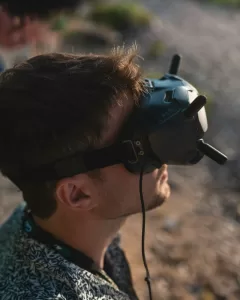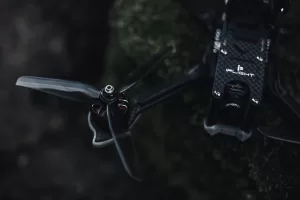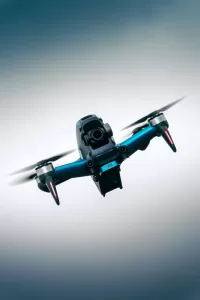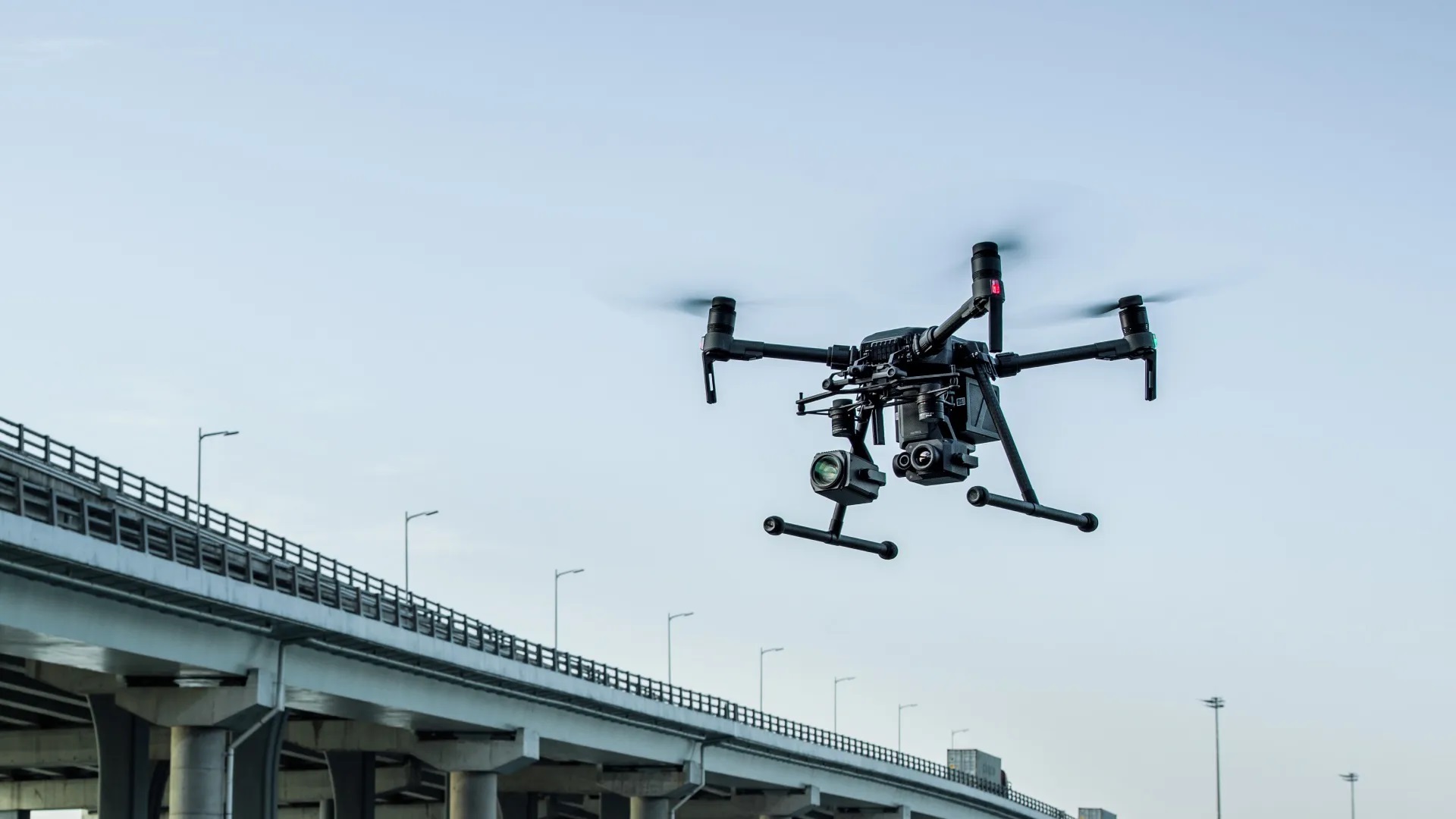15 years ago: my first steps as a drone builder
Fifteen years ago, I started as an enthusiastic hobbyist building my own FPV drone. I personally milled lightweight carbon frames on a small CNC machine and assembled all components: a basic camera, a video transmitter, and small electric motors. With an FPV headset on my head, I flew – still quite inexperienced – across the landscape, seeing the world as if I were flying myself. That first self-built drone experience gave me an incredible thrill and laid the foundation for my passion for FPV drones.
What are FPV drones?
 FPV stands for First Person View and means that, as a drone pilot, you receive live images directly from the drone’s camera. In the early days, this usually happened via an analog video link, with a small transmitter on the drone and a receiver built into the goggles or monitor. This way, you experience the flight as if you are inside the drone – something drone enthusiasts describe as a unique, almost bird-like sensation. Although technology has advanced enormously since then, the core feeling remains the same: flying in real time through the eyes of your aircraft.
FPV stands for First Person View and means that, as a drone pilot, you receive live images directly from the drone’s camera. In the early days, this usually happened via an analog video link, with a small transmitter on the drone and a receiver built into the goggles or monitor. This way, you experience the flight as if you are inside the drone – something drone enthusiasts describe as a unique, almost bird-like sensation. Although technology has advanced enormously since then, the core feeling remains the same: flying in real time through the eyes of your aircraft.
Technological evolution: from analog to digital

Over the years, FPV drones have made huge technological leaps. Where cheap cameras and basic analog video transmitters were once the standard, today’s systems offer digital HD streaming with ultra-low latency. Key developments include:
-
Digital FPV video: Modern systems like the DJI O3 Air Unit and Caddx Vista deliver full HD images wirelessly to your goggles, offering sharper visuals with minimal delay compared to older analog systems.
-
Improved frames: Modern FPV frames are typically made from lightweight carbon fiber, designed for maximum speed and maneuverability while remaining robust for acrobatic flights.
-
More powerful motors: Efficient high-KV brushless motors provide FPV drones with significantly more power, resulting in faster accelerations, higher top speeds, and tighter control during tricks.
-
Advanced flight controllers: Today’s controllers, powered by F4/F7 chips and running software like Betaflight or iNav, process sensor data incredibly quickly, ensuring greater flight stability and advanced features like OSD, automation, and GPS integration.
-
Better FPV cameras: Modern FPV cameras deliver greater contrast and wider dynamic range, making flying easier under bright or low-light conditions.
Modern FPV Systems: DJI FPV, Avata, and O3 Air Unit

Major manufacturers like DJI have revolutionized the FPV world with complete new systems:
-
DJI FPV Combo: DJI’s first true FPV drone kit, offering 4K video, speeds up to 140 km/h, and an innovative digital transmission system for crystal-clear visuals in the headset.
-
DJI Avata: A compact cinewhoop-style drone designed for FPV flying in tight spaces, featuring a built-in gimbal camera and a robust propeller guard – perfect for content creators.
-
DJI O3 Air Unit: A digital upgrade module for custom-built FPV drones, featuring an HD camera and a high-power transmitter, enabling users to retrofit their frames for digital FPV.
-
Other systems: In addition to DJI, brands like Fat Shark (Byte Frost) and Caddx are making digital FPV more accessible with high-quality video transmission solutions for racers and freestyle pilots.
Applications and Regulations of FPV Flying
FPV drones have many uses, including:
-
Freestyle FPV: Pilots perform tricks like flips, dives, and tight turns – a creative and adrenaline-filled form of flying.
-
FPV Racing: Competitive drone racing through obstacle courses at speeds over 100 km/h, popularized by leagues like the Drone Racing League (DRL).
-
Cinematic FPV: Cinewhoop-style FPV drones are increasingly used in film and video production for dynamic, close-up action shots.
-
Inspections and Surveys: FPV provides precise control and real-time visibility, ideal for technical inspections in construction or agriculture.
-
Hobby and recreation: Many enthusiasts enjoy FPV purely for fun, supported by flying clubs and local drone communities.
Regulations in Belgium and Europe:
-
You must register as a drone operator with the Belgian aviation authority (BCAA).
-
For drones over 250g, passing the A1/A3 online theory exam is mandatory.
-
FPV flights within visual line of sight fall under the Open category; beyond line of sight requires Specific category certification and a SORA risk assessment.
-
No-fly zones must be respected (airports, cities, nature reserves).
-
Commercial FPV operations require an operational authorization and proof of appropriate training and experience.
Training and Certification
-
Basic drone training: Required for all pilots flying drones over 250g (EU certificate A1/A3).
-
FPV courses: Available from drone schools and clubs, focusing on safe, advanced FPV flight.
-
Flight certificates: Needed for heavy drones or beyond-visual-line-of-sight operations.
-
Professional licenses: Required for companies using FPV for commercial purposes (media, inspections).
In 2025, FPV drones are a mature technology with clear training and regulatory structures. Yet the field continues to evolve rapidly: innovations like VR-FPV goggles, extended flight times, and better battery tech are already on the horizon. The best part, however, remains the experience itself: as a pilot, you truly become the drone.
At Droneview.be, you’ll find the latest FPV news, tips, and inspiring stories to fuel your passion for FPV flying. Are you ready to join the adventure?
